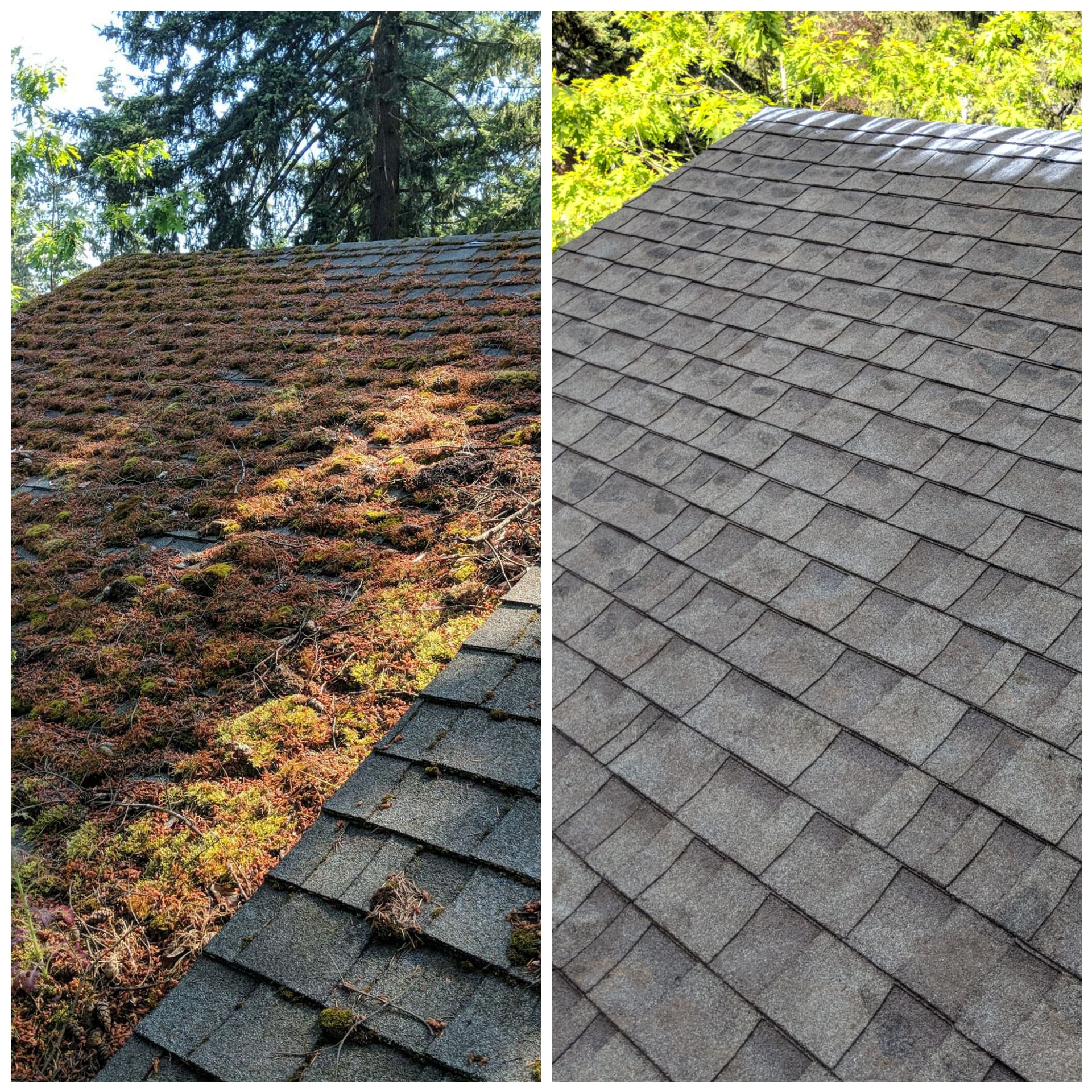For many, the lush greenery of the Pacific Northwest is part of the region’s charm. However, this same climate that nourishes the region’s iconic forests also provides an ideal environment for moss to take root. When it comes to your home’s roof, moss might seem like a mere aesthetic nuisance at first, but left to its own devices, it can lead to significant and costly damage. In Portland, Oregon, where rain and shade are plentiful, understanding the impact of moss on your roof is a crucial aspect of home maintenance.
The Menace of Moss
Moss is more than just a green sheen on your rooftop. It is a simple, non-vascular plant that doesn’t have a root system and instead absorbs water and nutrients through its leaves. This makes it particularly efficient at staying hydrated, even in the damp and cool climate of Portland. While moss itself does not outrightly cause roof damage, its presence can lead to issues that, over time, can compromise the integrity of your roof.
How does Moss Grow?
Moss is opportunistic and will sprout wherever it can find adequate moisture and a lack of sunlight. Portland provides the perfect combination of these conditions. The growth of moss starts by airborne spores that settle in the shaded and moist areas of your roof. Once established, moss thrives and can spread rapidly, especially during the rainy seasons.
Moss on Your Roof—Not Just a Cosmetic Issue
The accumulation of moss is not merely a cosmetic problem. Moss can cause a multitude of issues for your roof, including:
- Granule Loss: On asphalt shingles, the granules protect the underlying material from the sun’s UV rays. Moss growth can dislodge these granules, reducing the shingle’s lifespan and making them more susceptible to damage.
- Moisture Retention: Moss acts like a sponge, trapping moisture against the roof’s surface. This prolonged dampness can weaken the material and lead to rot, especially on wooden roofs.
- Blocking Drainage: In valleys and around vents, moss can actually impede the flow of water, leading to water pooling and potential leaks.
- Root Penetration: Some types of moss have tiny root-like structures called rhizoids, which can penetrate and dislodge shingles or tiles.
Risking Your Insurance Coverage
In many regions, including Portland, insurance companies may deem moss on a roof as a sign of neglect. If moss is a contributing factor to roof damage, it could lead to a claim denial or higher premiums, which emphasizes the importance of regular roof maintenance, including moss removal.
Inspecting for Moss
A proactive approach to roof maintenance can help identify and address moss growth before it becomes a major problem. Regular visual inspections are the first line of defense.
Signs of Moss Infestation
- Visible Clumps of Moss: This is the most obvious sign. If you can see moss from the ground, there’s likely more you can’t see higher up.
- Discoloration: Moss can cause discoloration on shingles or tiles, which may appear as irregular dark patches.
- Debris Buildup: The breakdown of moss and the material it displaces from your roof can lead to debris in your gutters, indicating a moss presence (even without visible moss).
Ideal Time for Inspections
Inspect your roof at least twice a year, ideally during the spring and fall. These seasons in Portland offer a good balance of drier weather and enough light to make spotting moss easier.
Removal and Prevention
Once you’ve identified moss growth on your roof, the next step is removal and prevention. It’s essential to approach moss removal with care, as aggressive cleaning methods can do more harm than good.
DIY Methods
For light moss growth, DIY methods can be effective. These may involve gently scrubbing the moss with a soft-bristle brush or using a moss-killing product applied according to its instructions.
Professional Services
In cases of heavy moss infestation, or for homeowners who prefer to err on the side of caution, professional roof cleaning services are the best option. These companies are equipped with the knowledge and tools to remove moss safely without damaging your roof.
Roof Coatings for Prevention
After moss removal, applying a protective roof coating can help prevent future growth. These coatings typically inhibit moss and algae growth, and some also offer added UV protection for your roof materials.
The Long-term Battle
Moss removal is not a ‘one and done’ job. The same environmental conditions that allowed moss to grow in the first place can encourage its return. Long-term prevention may involve:
- Trimming Overhanging Branches: More sunlight on your roof means less moss-friendly shade.
- Improving Roof Ventilation: Better ventilation can help keep your roof dry.
- Zinc or Copper Strips: These can be installed at the peak of the roof; as rainwater washes over them, it carries zinc or copper compounds downward, which are toxic to moss.
Final Thoughts
Ignoring moss on your roof in Portland, Oregon, is not a choice homeowners can afford to make. The seemingly innocuous plant can lead to extensive roof damage if left unchecked. Treating moss on your roof is not just about preserving the aesthetics of your home; it’s about safeguarding your substantial investment. Regular inspection, gentle removal, and thoughtful prevention are key practices that can help you maintain the health and longevity of your roof in the face of this silent, yet significant, threat. Take action today to avoid costly repairs tomorrow.

